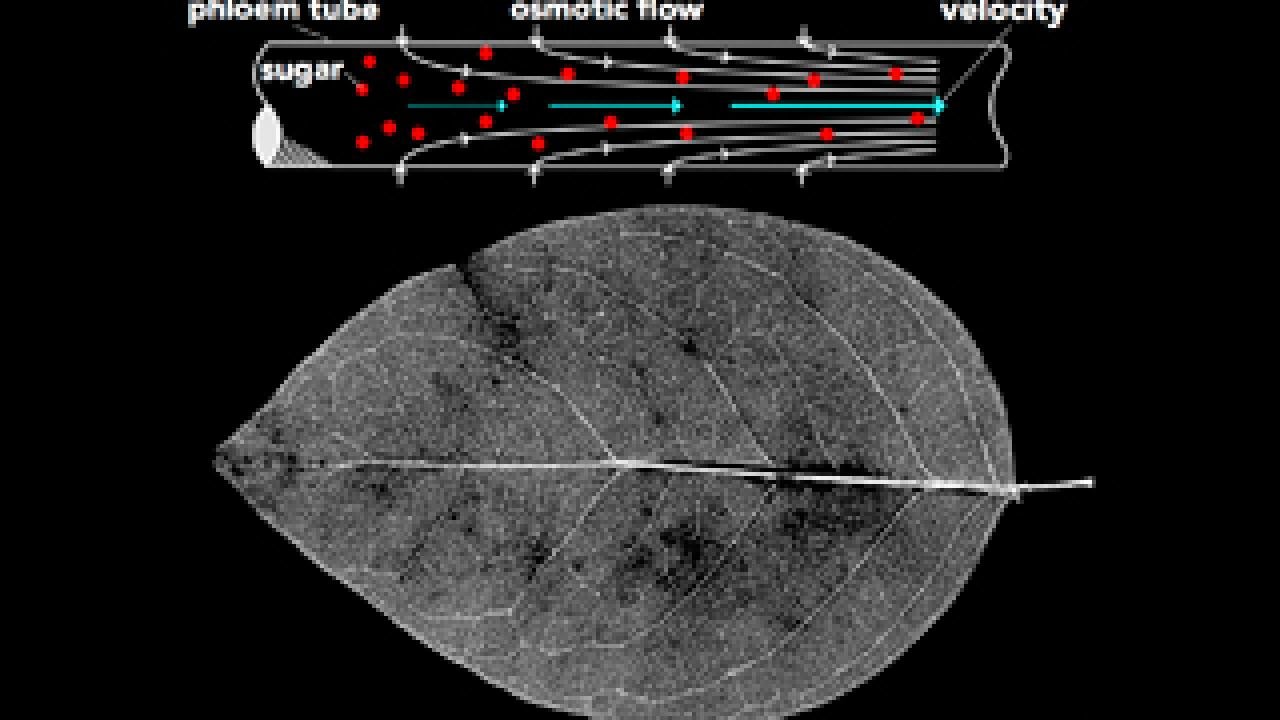Why are the leaves on the tallest trees all about the same size, and why aren’t those tall trees even taller? It all has to do with basic scientific principles at work in nature, according to researchers at Harvard University and the University of California, Davis.
In both cases — leaf size and tree height — the explanations are rooted in the physics of the tree’s plumbing, or the branching vascular system that nourishes the tree from leaf to trunk, the researchers write in this week’s issue of the journal Physical Review Letters.
“It all comes down to the leaf size and tree height that provide for the optimal flow of sap and energy throughout the tree,” said Maciej Zwieniecki, a biologist in the UC Davis Department of Plant Sciences, who collaborated on the study with biophysicist Kaare Jensen of Harvard University.
Their findings offer a new explanation for the lack of tall trees in environments with limited water and the prevalence of the tallest trees in the world’s most forgiving environments, such as tropical rain forests or foggy river ravines.
In this study, the researchers focused on angiosperms, the group of flowering plants that includes trees like oak and sycamore, rather than on the gymnosperm group, which includes trees like pine and spruce.
In analyzing data on 1,925 angiosperm tree species, they found that, overall, tree leaves range in size all the way from less than one inch to more than four feet long. The tallest of these trees, however, have leaves that fall in the relatively narrow range of approximately 4 inches to 8 inches long.
Jensen and Zwieniecki suggest that this surprising decline in leaf size diversity that accompanies increasing tree height is a product of fluid dynamics within the tree.
Like most other plants, trees fuel their growth and development through photosynthesis — the natural process that uses water, carbon dioxide, minerals and sunlight energy to produce carbohydrates. The sugar-rich fluid produced through photosynthesis in the leaves travels to other parts of the tree via a system of channels called phloem.
The researchers modeled the tree phloem system as if it were composed of permeable, cylindrical tubes. The leaf phloem collected the sugar-rich fluid and generated energy to transport it through a much longer tube running down the trunk.
As the fluid passed through the leaf phloem toward the stem, it gathered speed as more and more water was pulled in from the leaf through osmosis. Consequently, the longer the leaf, the faster the fluid flowed, much like streams rushing toward a river.
When the fluid reached the tree trunk, however, no more sugar was collected in the phloem, and only water was drawn from the surrounding tissue. The trunk phloem was longer and, consequently, presented more resistance to the fluid’s flow as it traveled down the trunk and to the roots.
This model illustrated two functions at work, one involving leaf size and the other related to tree height.
First, there was an advantage for a tree to have larger leaves because it could produce more nutrient-rich fluid that would flow more quickly toward the trunk and roots. If the tree’s leaves were too small, the fluid would move too slowly to be beneficial.
Secondly, although increased height might provide some trees with better access to sunlight, it also would increase the length and thus flow resistance of the trunk phloem, slowing the movement of nutrients toward the roots.
“So there comes a point where the optimal limits on leaf size and tree height intersect, indicating the point at which it is no longer advantageous for the tree to become taller or producer larger leaves,” Zwieniecki said.
He noted that this point is approximately 100 meters, or slightly more than 300 feet — about the size of the tallest angiosperms.
Funding for the study was provided by the National Science Foundation and the U.S. Air Force Office of Scientific Research.
Media Resources
Pat Bailey, Research news (emphasis: agricultural and nutritional sciences, and veterinary medicine), 530-219-9640, pjbailey@ucdavis.edu
Maciej Zwieniecki, UC Davis Plant Sciences, (530) 752-9880, mzwienie@ucdavis.edu
Kaare Jensen, Harvard Organismic and Evolutionary Biology, (857) 756-2403, jensen@fas.harvard.edu
